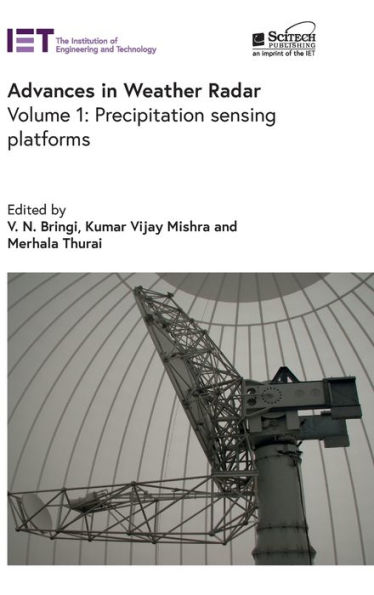A truly comprehensive collection in 3 volumes, Advances in Weather Radar has been developed by three expert editors and written by senior researchers from academia, research laboratories, and national weather agencies. Every chapter has been reviewed by the editors and an external reviewer to ensure quality and accuracy.
The key elements for understanding weather radar are covered, from the fundamental science and engineering to signal processing, electromagnetics, and applications. Special attention is given to dual-polarization radar because of its important applications in rainfall measurement, in elucidating details of cloud physical processes, classification of meteorological and non-meteorological echo types, the validation and evaluation of bulk microphysical schemes that predict number density and mixing ratio, and radar hydrology among other more recent applications.
Volume 1: Precipitation sensing platforms begins with a historical overview of the last decade focusing on the key technical and scientific ideas that have propelled the field forward, and goes on to address major advances in designing, operating, and deploying weather radars across the globe. Volume 2: Precipitation science, scattering, and processing algorithms considers theoretical milestones achieved in microphysics, electromagnetics, and signal processing of radar meteorology. Volume 3: Emerging applications includes applications of weather radars in novel as well as non-meteorological applications.
These edited volumes are intended to be useful to graduate students, radar systems designers, high-level managers of national meteorological services, and other research scientists who need to delve deeper into specific topics that cannot be found elsewhere.
A truly comprehensive collection in 3 volumes, Advances in Weather Radar has been developed by three expert editors and written by senior researchers from academia, research laboratories, and national weather agencies. Every chapter has been reviewed by the editors and an external reviewer to ensure quality and accuracy.
The key elements for understanding weather radar are covered, from the fundamental science and engineering to signal processing, electromagnetics, and applications. Special attention is given to dual-polarization radar because of its important applications in rainfall measurement, in elucidating details of cloud physical processes, classification of meteorological and non-meteorological echo types, the validation and evaluation of bulk microphysical schemes that predict number density and mixing ratio, and radar hydrology among other more recent applications.
Volume 1: Precipitation sensing platforms begins with a historical overview of the last decade focusing on the key technical and scientific ideas that have propelled the field forward, and goes on to address major advances in designing, operating, and deploying weather radars across the globe. Volume 2: Precipitation science, scattering, and processing algorithms considers theoretical milestones achieved in microphysics, electromagnetics, and signal processing of radar meteorology. Volume 3: Emerging applications includes applications of weather radars in novel as well as non-meteorological applications.
These edited volumes are intended to be useful to graduate students, radar systems designers, high-level managers of national meteorological services, and other research scientists who need to delve deeper into specific topics that cannot be found elsewhere.

Advances in Weather Radar: Precipitation sensing platforms
542
Advances in Weather Radar: Precipitation sensing platforms
542Hardcover

Product Details
| ISBN-13: | 9781839536229 |
|---|---|
| Publisher: | The Institution of Engineering and Technology |
| Publication date: | 02/20/2024 |
| Series: | Radar, Sonar and Navigation |
| Pages: | 542 |
| Product dimensions: | 6.14(w) x 9.21(h) x (d) |
